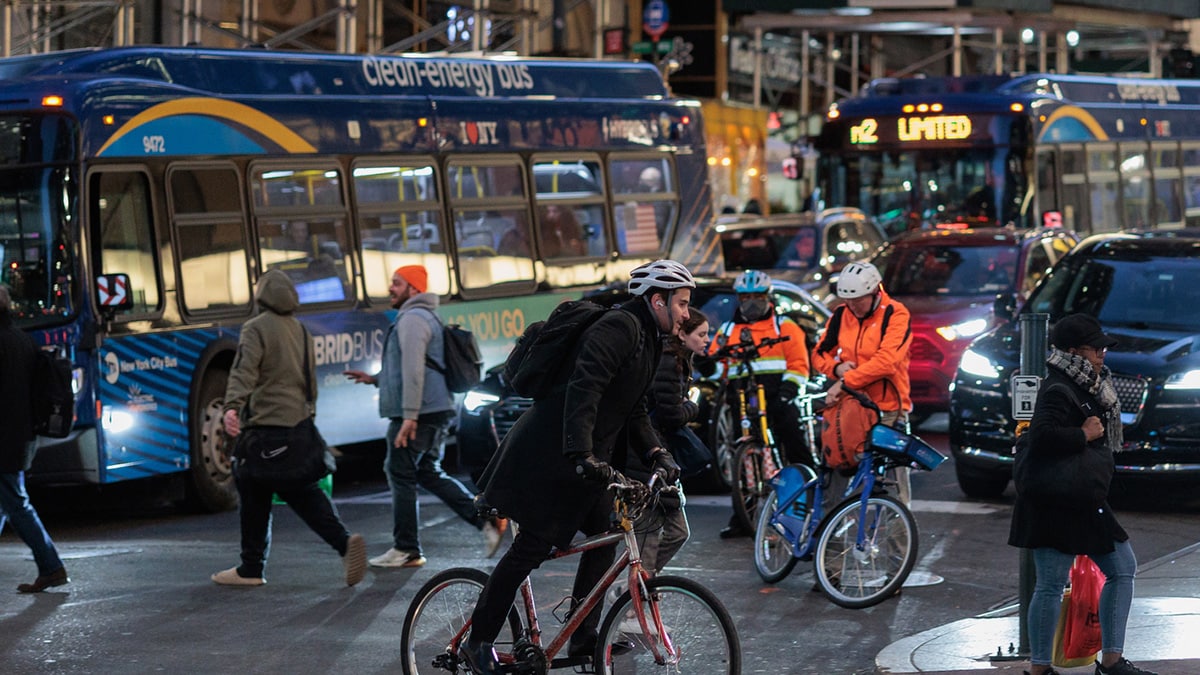At a glance
Transportation choices can shape community health by affecting the air quality, traffic safety, and the physical and mental health of its residents. The Tracking Network includes these data to help identify the effects transportation may have on our health and environment.

We Track That
The Tracking Network includes transportation-related data from the U.S. Census Bureau and the U.S. Department of Transportation. These data can help us better understand things like
- exposures to air pollution from traffic,
- factors that may play a role in traffic safety, and
- health benefits of using active transportation options.
Types of Data
The following indicators provide data on commute times, motor vehicle crashes, and transportation types. They are available at national, state, county, tribal, and census tract levels.
This indicator estimates the average one-way commute time for workers. It breaks down the number of workers driving, taking public transit, or walking to work.A
This indicator displays the number, rate, and location of motor vehicle crashes. It also calculates the percentage of motor vehicle crashes involving cyclists or pedestrians.A B
This indicator shows the number and percent of people aged 16 years and older in a geographic area who used a specific type of transportation to commute to work.A
Access the Data
Use the Data Explorer to create custom maps, tables, and charts.
View data in simple Quick Reports.
Get machine-readable data from the Application Program Interface (API).
Data in Action
The transportation data on the Tracking Network can be used for the following activities.
Demonstrate impact by showing how changes in commute time can affect related variables over time. These could include air pollution, physical activity, and traffic safety.
Support additional resources or behavior change to reduce motor vehicle crash fatalities. This could be especially helpful among groups more likely to have serious outcomes, like pedestrians and bicyclists.
Identify communities that have more walking, bicycling, and public transportation trips. They can serve as an example to model policies and provisions to promote active and public transportation.
Advocate for resources, transportation infrastructure, and behavior change. These can lead to increases in walking, bicycling, and public transportation use among commuters.
- These data are supplied by the U.S. Census (2020).
- Data on motor vehicle-related fatalities come from the National Highway Traffic Safety Administration Fatality Analysis Reporting System (FARS). FARS may slightly underestimate the number of fatal crashes by not counting off-the-road fatalities and deaths that occur more than 30 days after the crash.
